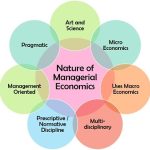If you search the Internet for “Creative Problem Solving,” you’ll find evidence of many variations, all of which may be traced back to the work that was started by Alex Osborn in the 1940s, developed with Sid Parnes in the 1950s, and nurtured at SUNY Buffalo State and the Creative Education Foundation.
The diversity of approaches to the creative problem solving process that have developed since is a testimony to the power of the idea. While many models exist, the Creative Education Foundation focuses on an evolution of the Osborn-Parnes Creative Problem Solving process called the CPS Learner’s Model.
Based on the Osborn-Parnes process, the CPS Model uses plain language and recent research. The basic structure is comprised of four stages with a total of six explicit process steps. Each step uses divergent and convergent thinking.

| Stage | Step | Purpose |
| CLARIFY | Explore the Vision | Identify the goal, wish, or challenge. |
| Gather Data | Describe and generate data to enable a clear understanding of the challenge. | |
| Formulate Challenges | Sharpen awareness of the challenge and create challenge questions that invite solutions. | |
| IDEATE | Explore Ideas | Generate ideas that answer the challenge questions. |
| DEVELOP | Formulate Solutions | To move from ideas to solutions. Evaluate, strengthen, and select solutions for best “fit.” |
| IMPLEMENT | Formulate a Plan | Explore acceptance and identify resources and actions that will support implementation of the selected solution(s). |
Learner’s Model based on work of G.J. Puccio, M. Mance, M.C. Murdock, B. Miller, J. Vehar, R. Firestien, S. Thurber, & D. Nielsen (2011)
Core Principles of Creative Problem Solving
CPS begins with two assumptions:
· Everyone is creative in some way.
· Creative skills can be learned and enhanced.
The core principles are:
· Divergent and Convergent Thinking Must be Balanced – Keys to creativity are learning ways to identify and balance expanding and contracting thinking (done separately), and knowing when to practice them.
· Ask Problems as Questions – Solutions are more readily invited and developed when challenges and problems are restated as open-ended questions with multiple possibilities. Such questions generate lots of rich information, while closed-ended questions tend to elicit confirmation or denial. Statements tend to generate limited or no response at all.
· Defer or Suspend Judgment – As Osborn learned in his early work on brainstorming, the instantaneous judgment in response to an idea shuts down idea generation. There is an appropriate and necessary time to apply judgement when converging.
· Focus on “Yes, and” rather than “No, but” – When generating information and ideas, language matters. “Yes, and” allows continuation and expansion, which is necessary in certain stages of CPS. The use of the word “but” – preceded by “yes” or “no” – closes down conversation, negating everything that has come before it.



Comments are closed